8 Brilliant Blogs Run by Ecommerce Stores (And What You Can Learn From Them)

Ecommerce store owners understand the importance of marketing and developing a strong web presence. They create beautiful storefronts, invest in advertising campaigns, and build email marketing sequences to attract and win over customers.
But look at their blogs and you’ll notice that a lot of them—especially B2C ecommerce sites—either don't have a blog or don't have a content marketing strategy.
This can be a missed opportunity, especially in ecommerce where many niches aren't yet overly saturated with high quality and engaging content.
If you're looking for inspiration about how to blog for your own ecommerce business, we’ll be taking a close look in this post at 8 different examples of outstanding blogs run by ecommerce stores, including the content they create and the strategies behind them.
But first, let's talk about how to make a website blog revolutionize your business.
What blogging should be
A thoughtful, deliberate blogging strategy can help you nurture customer relationships, generate recurring inbound traffic, and give you a way to promote new products and services while building your brand.
Blogging also gives you a lot of room for creativity. You can go many different routes with your blog, with different types of content, storytelling, and distribution tactics to make your blog beneficial to your business.
In fact, it's likely for this reason that a lot of ecommerce sites struggle with blogging. Simply publishing a few posts a month, after all, isn't enough to regularly bring traffic to your site. You need to develop a strategy in order to get to your blog to that point.
Your blog should:
- Add value. Your blog should contain content that your target audience wants to read. Entertain them, educate them, share news, or do a little of all three. Just remember that it’s not about you, it’s about your customers and their wants and needs.
- Have clear goals. What do you want to get out of blogging? Ideally, you should be focused on bringing readers in through search engines and social media, building a relationship with them, and then eventually driving sales.
- Build upon your brand. Blogs can be used to not only support your brand, but to help establish it. Blogging gives you a voice and you can harness storytelling to connect with users and make your brand stand out.
- Be consistent. If you can only put out one post a month, that’s okay. Just make sure that you’re making time to hit that once-a-month mark regularly.
Your blog should not:
- Read like an over-hyped sales pitch. People have come to your site to look at your products. If they want more information on what you sell, they’ll head to your product pages, not your blog (though your blog posts can direct them there).
- Consist only of product photos. It doesn’t matter how sought-after your products are, you shouldn’t just have blog posts comprised of nothing but images. Even the most popular photography bloggers—whose images are the obvious focus—will often complement their photos with written storytelling to establish context and create an emotional connection.
- Look random and disorganized. Diversity in what you publish can help you attract multiple types of readers, but it should all fit under the umbrella where your products and your audience's needs overlap. Everything should feel connected to your brand and organized into categories that you consistently contribute to.
Brands that can attract an audience through education, inspiration, or entertainment can generally benefit from blogging in some form or another.
But at the end of the day, you'll have to carve out a way to blog that works for you, as these 8 ecommerce businesses have done.
1. Au Lit Fine Linens
Au Lit Fine Linens sells everything to help you get a good, relaxing night’s sleep: luxury sheets, bath linens, pillows, and more.
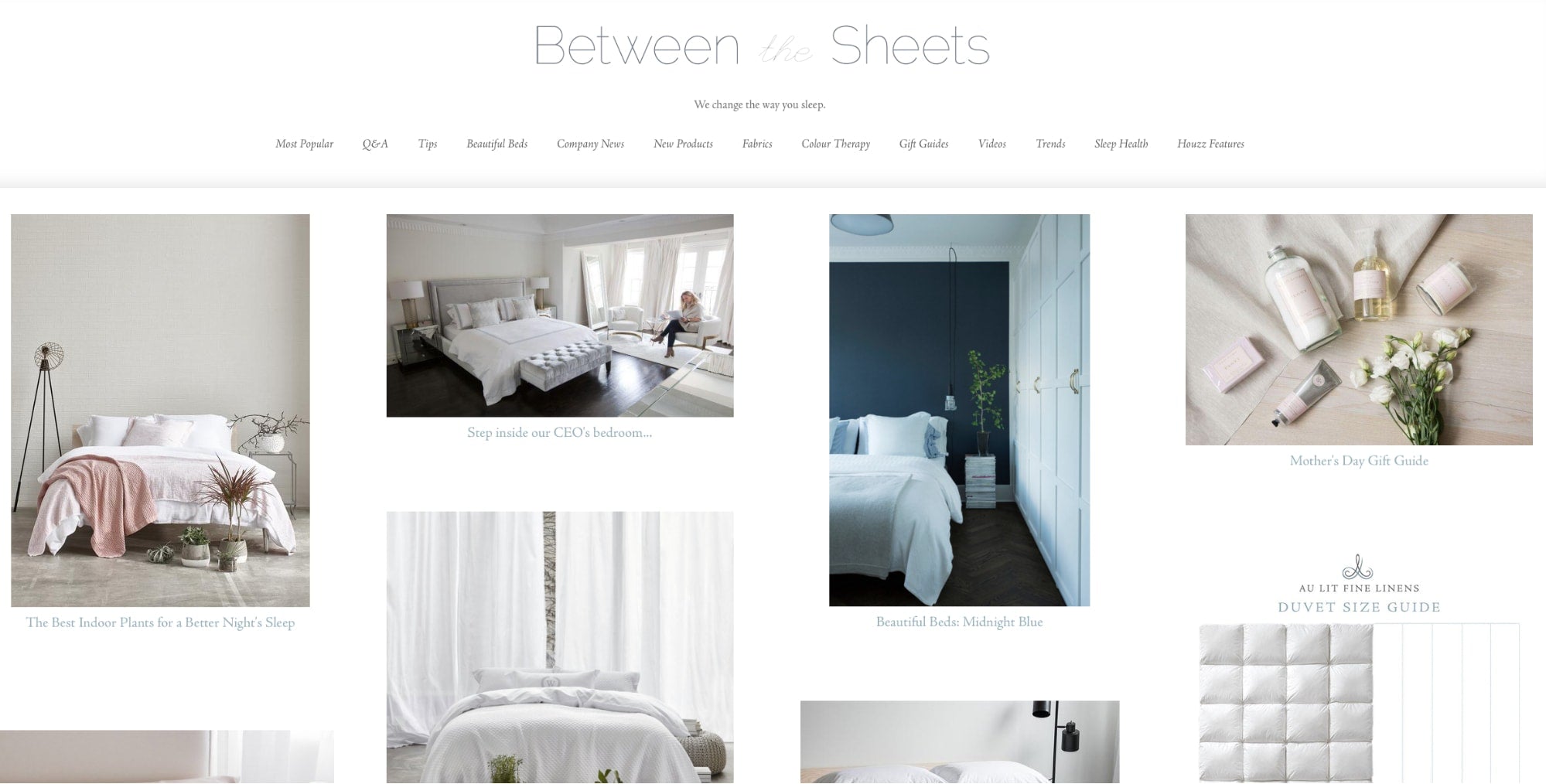
Their blog follows this same trend, offering helpful articles that discuss how their readers can improve their sleep quality. This content is directly relevant to both their target audience and their products, which is an immediate plus, because it means that users who click through and read are already somewhat qualified to buy.
This blog also uses a technique that almost all other ecommerce companies could borrow from. They write content that appeals to Google searches that potential customers are likely to make, like “what duvet size is right for my bed.” This is an exact phrase that users may be searching for, and they have a post all about it.
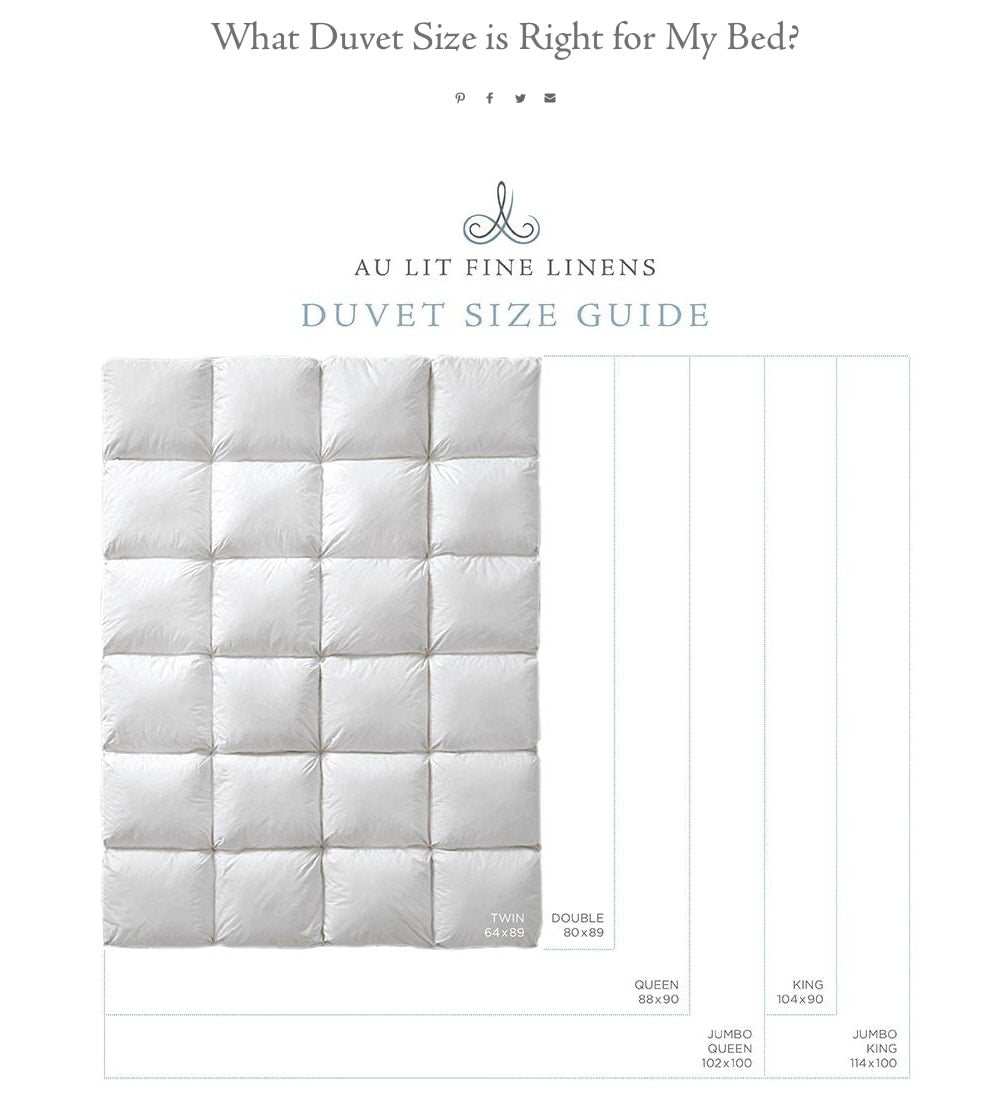
This post puts providing information first, answering the question thoroughly, going in-depth through multiple sections about what to do if, say, you have an extra deep pillow top mattress. Then, in a way that feels helpful instead of interruptive, they put a single line mentioning their best-selling duvets in the size they’re discussing.

By treating it as a mention, this comes across as helpful instead of as a sales promotion, and users are a lot more likely to click and purchase. After all, if users are trying to figure out what duvet size is right for their bed, there’s a good chance they’re in the market for one.
Their blog also contains other great information, like indoor plants to get a restful night’s sleep and a Mother’s Day gift guide. They strike the right balance between promotional and helpful, so that when they do drop a product link, it feels more like a recommendation from a friend than a sales pitch.
They also have a second blog found under a “Tips & Advice” section, featuring content created to help users make buying decisions. There might be overlapping content between this section and their main blog, but by giving this content its own destination, they can focus on helping interested buyers make informed purchase decisions (your bed is a key part of your life, after all).
If you want to replicate this approach for yourself, Shopify allows you to have multiple blogs on your store.
Key takeaways:
- Create content to target keywords that users are likely to search for when making buying decisions about your products, especially when there's an educational angle.
- Consider having multiple destinations on your site to address the different concerns new visitors have vs. those who have already decided to buy.
- Don’t make every post about your products, but don't be afraid to drop a link or two where appropriate.
2. Press’s Squeeze Magazine
Press sells cold-pressed juices and juice cleanses, so healthy living is a big focus for them and for their audience.
They also embrace this with their online content. They’ve taken what could've been a typical blog and converted it into an online publication called “Squeeze Magazine.”
This publication focuses on every aspect of healthy living, not just healthy eating. They discuss workout clothes, like leggings, offer suggestions for healthy places to eat while traveling, and have plenty of resources about mindfulness.
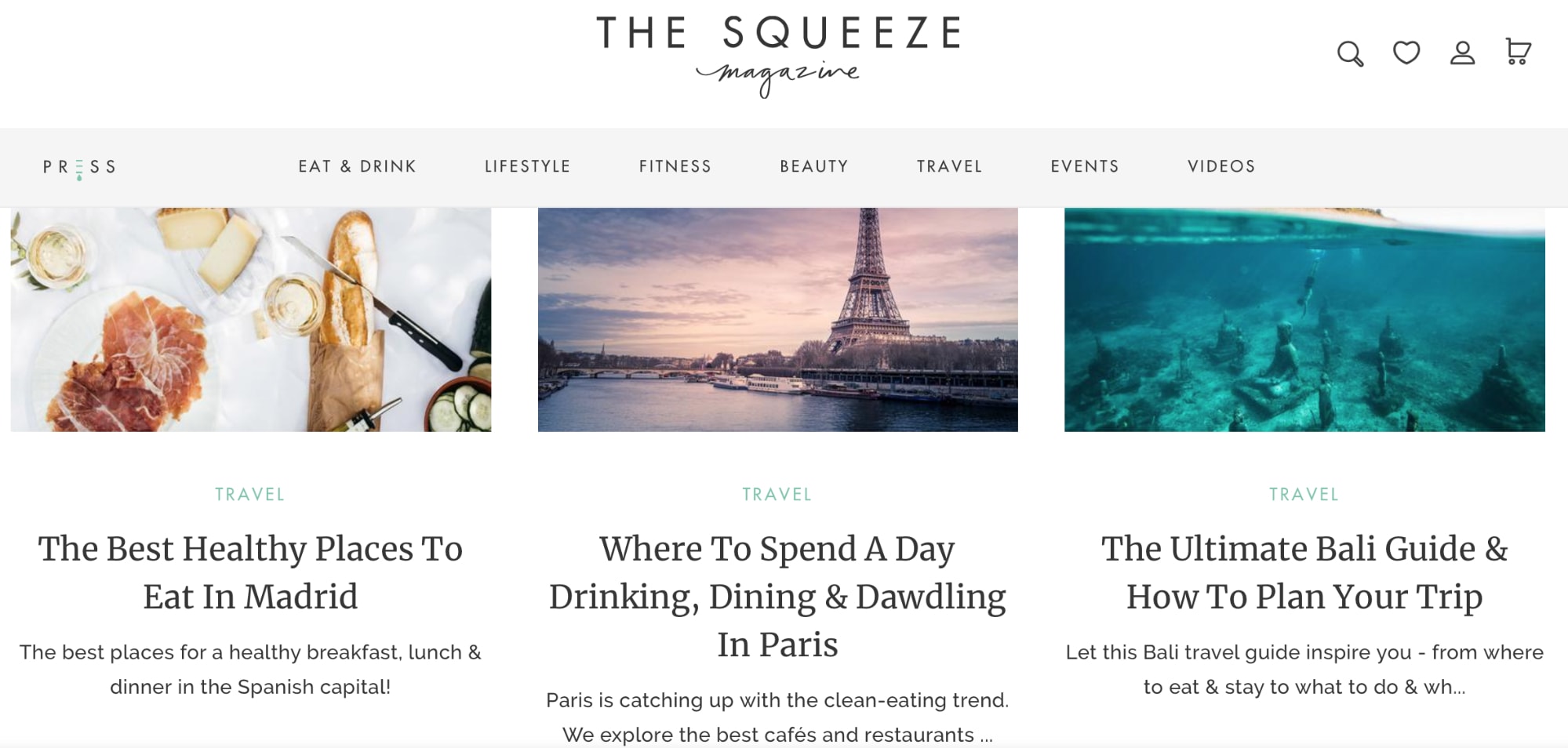
That being said, healthy eating suggestions are still front and center, with the publication offering both general tips and recipes.
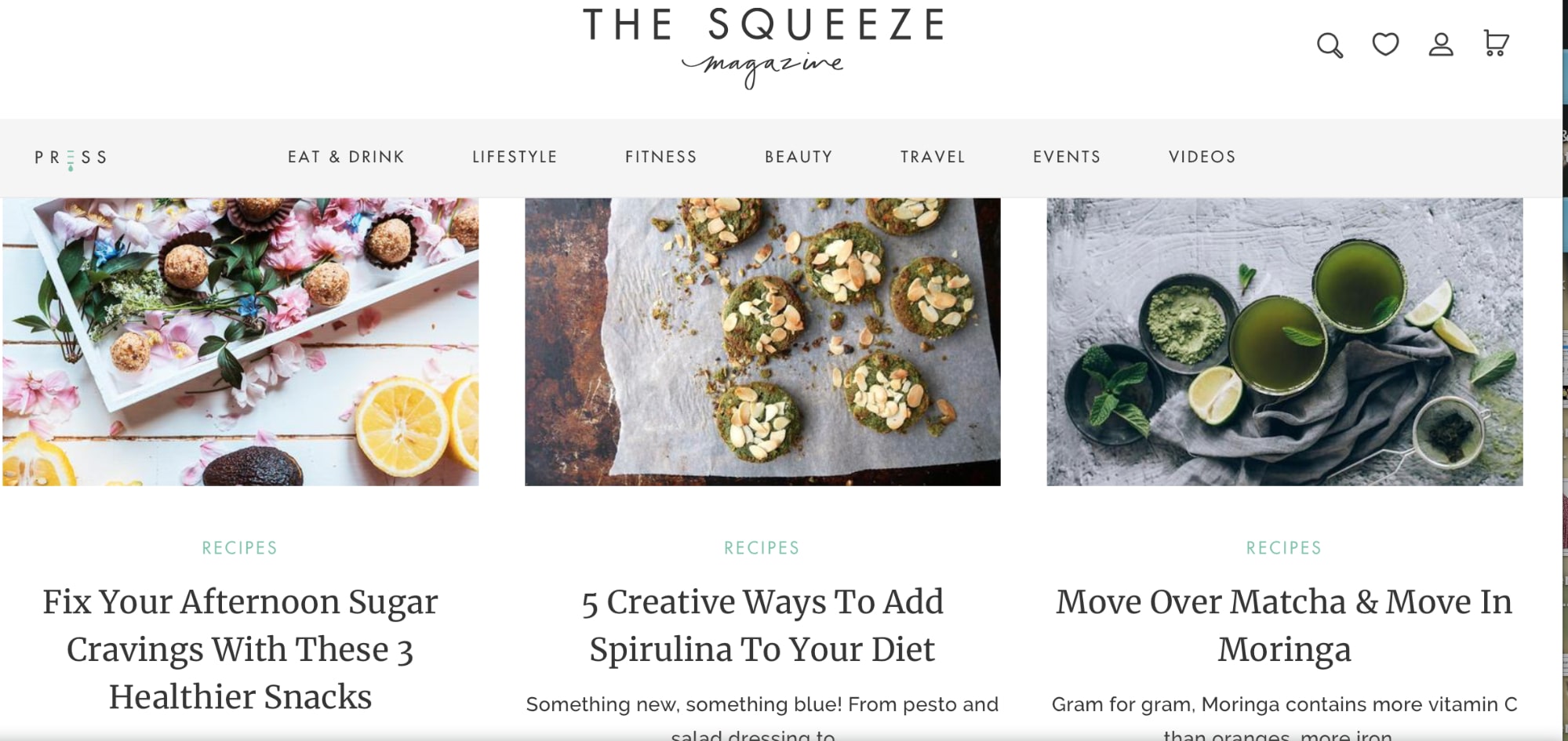
This attracts readers to the site via inbound marketing, but it also builds a community around their brand for those who are already customers or subscribers. They’ve created a resource with so much great lifestyle content that you could spend hours looking through their archives, and you’ll be happy to come back for more.
They also take their information seriously, which can help establish that trust. All of their content is well-researched and cited because accuracy matters, especially when you’re talking about health.
They don’t make wild claims out of nowhere or run sensational headlines, and instead take the time to find credible sources and list them in relevant blog posts for readers to see.

Squeeze also features diverse content that includes videos and interviews with influencers. This likely acts as part of their distribution strategy, as the influencers will probably share the content with their own audiences to potentially bring new readers to their site.
Key takeaways:
- Don’t be afraid to go big with your blog, even creating a publication that is an extension of your website.
- Prioritize building customer trust, including sources where appropriate.
- Use diverse content types and mediums, including interviews with influencers and video content that will perform well on multiple platforms.
Learn more: How to Increase Website Traffic: 20 Low-Cost Ideas [Ranked]
3. VineBox
Unless you’re an actual sommelier, wine is something that many of us would like to be (or at least seem) a little more knowledgeable about.
VineBox is an ecommerce site that sells subscriptions that allow you to taste different wines every month. Their blog—which teaches you in depth about the world of wine—is the perfect marketing counterpart to their product.
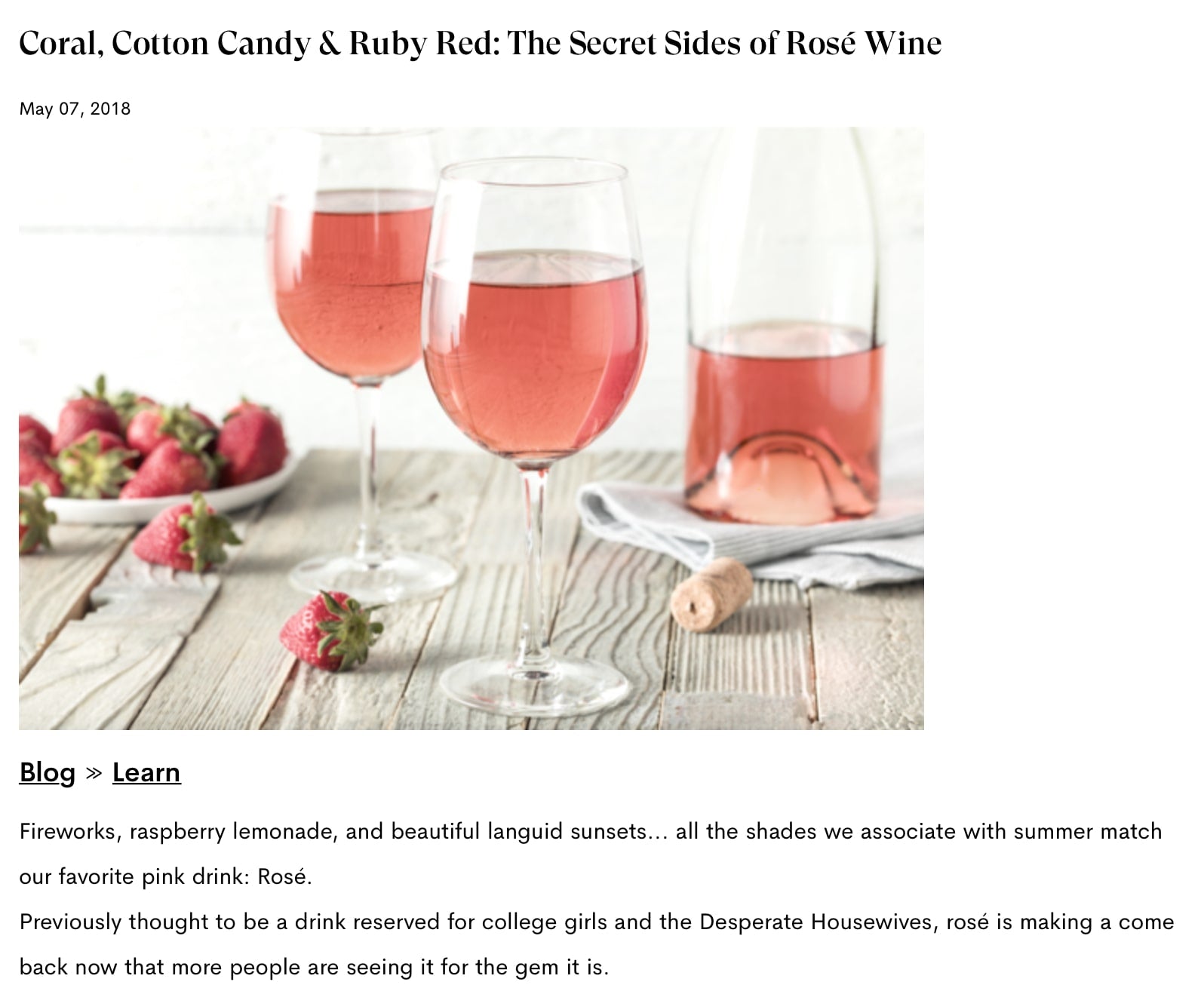
Since this subscription box is all about tasting new wines each month, the blog’s content focuses on creating connoisseurs, enticing you to invest in their subscription. Being able to create new members of your target audience instead of simply finding more is one of the benefits of content marketing.
Their blog does this in several ways.
First, it gives you plenty of knowledge about different wines that you’ll be excited to experience firsthand, like the different cotton candy and ruby notes found in rose wine.
It also helps you feel confident in the seller’s own knowledge. Someone who can break down the characteristics of a Riesling in three minutes is likely someone who knows how to recommend a good one.

They also have an excellent Ask-a-Somm section of their blog, where professional sommeliers answer questions submitted by users. This engages current members and helps them get direct answers from experts they trust. Again, it’s all about building relationships while demonstrating your expertise.

In addition to the general education posts—which are timeless and therefore offer long-term value—they also feature general interest topics you won’t find anywhere else to help define their brand, such as a post about wine for Mother’s Day, and one that discusses wine in art history.

Key takeaways:
- Consider using content to create new customers, not just attract already-qualified buyers.
- Demonstrate expert knowledge in a way that will be accessible to beginners.
- Ask your audience for their questions to help direct new content and establish relationships early on.
- Offer something different than the competition, as seen in their art history post.
4. BarkBox
BarkBox is a monthly subscription box containing goodies for your dog.
They take content marketing to another level, having a publication-style site called BarkPost, which has content spanning a variety of categories and mediums, all with one thing in common: dogs.

On this site, you can find information about the longest-lasting chew toys, how to know if your dog’s eye goop warrants a vet trip, and ridiculously adorable and hilarious pictures of dogs. They’ve found a way to encompass every type of content that dog owners would want to see and make it accessible through BarkPost, so it’s no surprise it gets its own domain.
One thing that you’ll notice quickly is that social media is a clear method of distribution for their content, and they’ve done everything right to optimize their site for social shares.
In the post below, there are a lot of social sharing bars visible right off the bat. There’s a share bar at the top of the article, next to the number showcasing that there’s been nearly 20,000 shares just on this one article. This creates social proof and increases the likelihood that other users will share, too. Then, there’s a floating social bar on the left side that follows users down the page as they read, so there’s always the option to share. Finally, there’s Pinterest save prompts on each image.
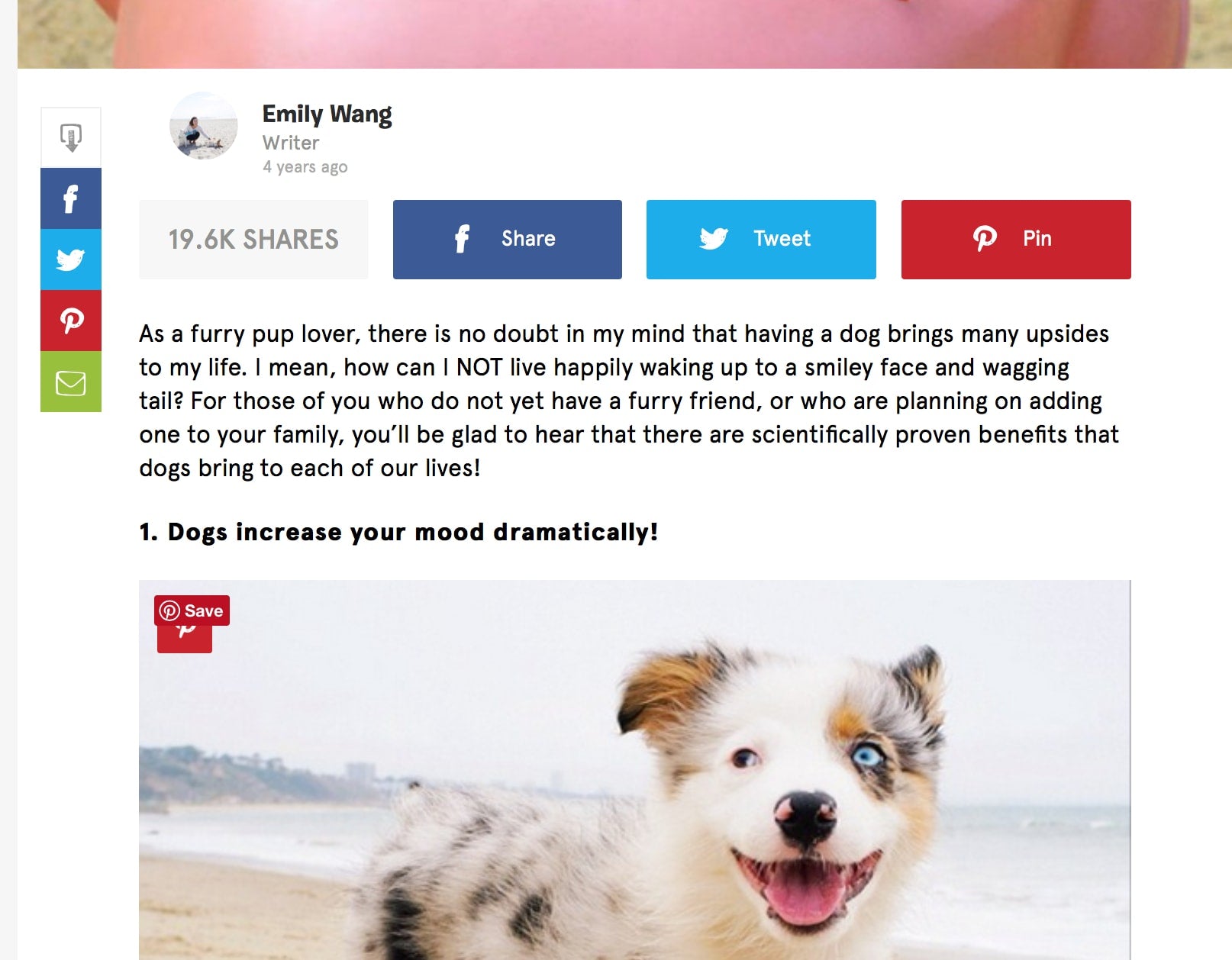
Your blog, after all, doesn’t just need great content to rank in search engine results; you also need a distribution plan that includes social media.
It’s also worth noting that their entire blog captures that feel-good emotion that they want users to associate with their brand. Their BarkBox product is a luxury product, after all, so attaching those stories and the feeling of sentimentality and warm fuzzies around the pup increases the likelihood that people will purchase from them.
Key Takeaways:
- Use content to generate the feelings you want users to associate with your brand, which can enhance relationship building.
- Offer a mix of useful and entertaining content to give your audience everything they’re looking for.
- Increase both social proof and social shares at once by placing sharing buttons on each post, giving you a boost in distribution.
5. BioLite Energy
BioLite is an ecommerce store selling outdoor energy gear like solar panels and camp stoves. Their blog does an excellent job both quietly promoting their products and offering value to their readers.
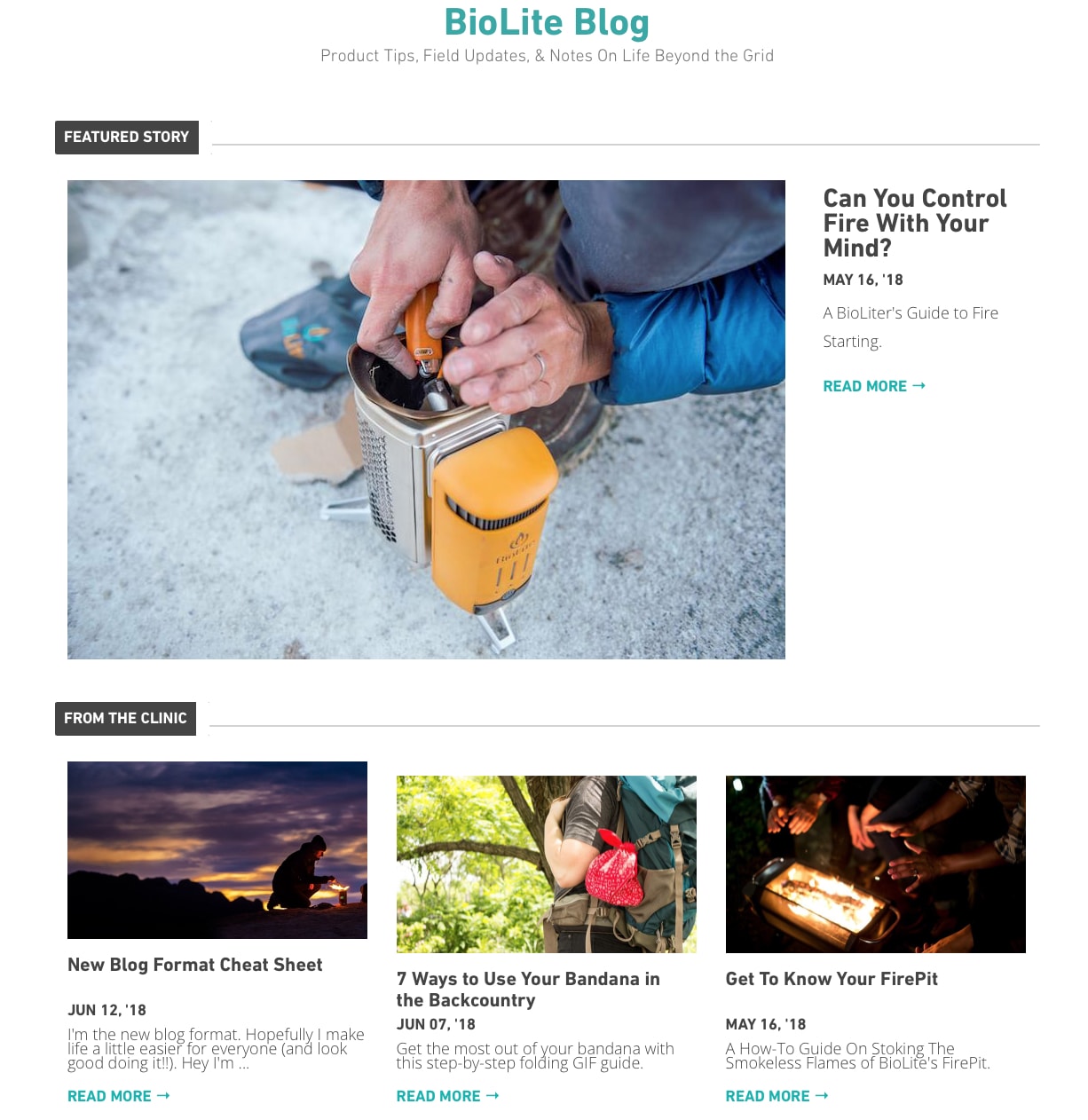
The how-to content stands out, in particular. It not only helps attract users to the site who are searching for it, but keeps them around because it’s so useful.
Their posts are in-depth, answering every facet of a question that potential customers might have. Their guide discussing fire starting is a great example. It shows you how to start a fire, and even offers a troubleshooting section if you're struggling.
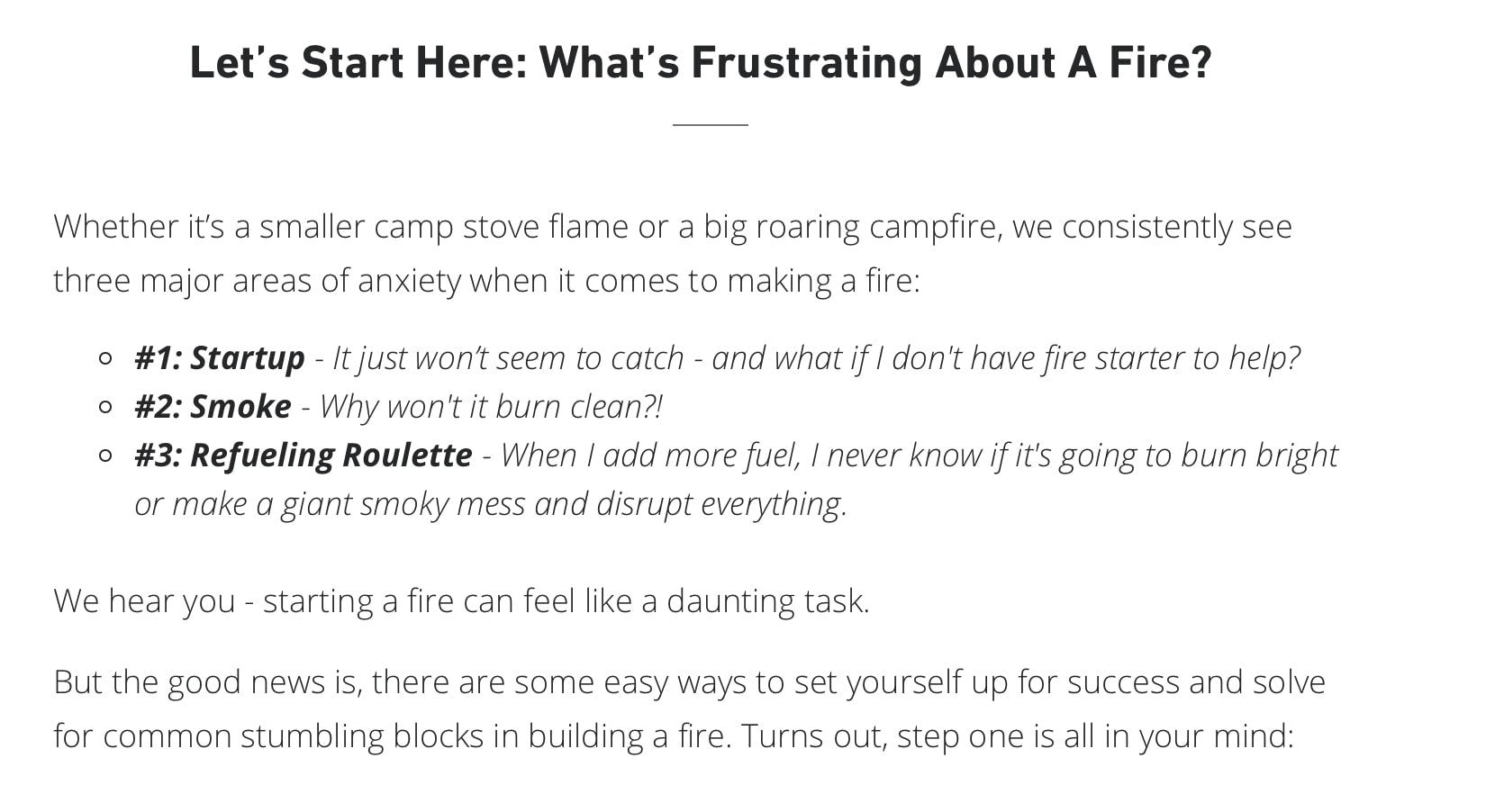
They aren’t just quickly answering questions to try to grab that coveted featured snippet on Google (not that there’s anything wrong with trying to do that); they want to be the most helpful resource online about how to start a fire.
While the blog offers significant value, there’s another thing that it does very well that we need to discuss. It utilizes a distinct brand voice and storytelling in order to build its brand and encourage more people to join in on the outdoor fun.
Headlines like “Get to Know Your Fire Pit” and “Can You Control Fire With Your Mind?” immediately jump out, and the voice in the posts themselves is conversational and friendly, like you’re chatting with an old friend.
The storytelling comes in during the posts themselves. Some posts, like this one, start with stories in order to capture interest and reel users in, ensuring they keep reading. Others tell the stories of customers, brand ambassadors, or employees to generate those emotional connections. Their “Moms Go Outside” post is an excellent example.

Overall, this blog does a lot of things well that other brands can adapt for their own business. Defining your voice and utilizing storytelling, and then implementing both with useful content is a great way to go.
Key takeaways:
- Go in-depth when answering customer questions in your content, anticipating further questions, and guaranteeing that you’ll be the only resource they need for a solution.
- Behind-the-scenes storytelling can capture user interest and create an emotional connection, especially when you relate it back to the reader.
- Create a distinct voice that will set your blog and its content apart from your competitors.
6. BestSelf
BestSelf is all about helping customers achieve their goals faster than ever, so it’s no surprise that productivity is a central focus for their blog.
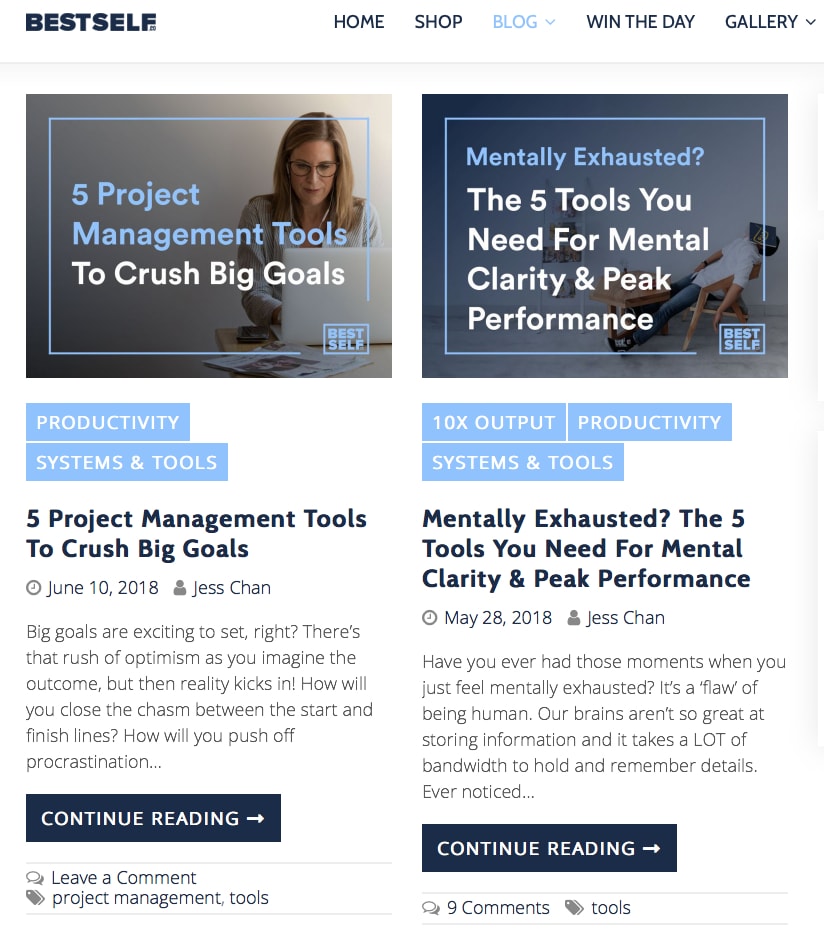
Their blog is hyper-focused, and there’s a good chance that this is because they’ve got their audience down to a T.
Posts discuss tools and lifestyle changes that can help aid productivity, improve your leadership skills, and accomplish goals. Self-improvement is the big focus here, because they know that anyone interested in buying from them is feeling motivated to make these changes.
Along with our first blog example, BestSelf does a great job casually sliding in product mentions without being too aggressive about it.
In a post titled “How to Focus On Yourself Without Being Selfish,” their second-to-last tip introduces journaling, and gently mentions that “the right journal” can help, linking to one of their products. The rest of the section is all about how to use it productively, so readers will feel inspired and ready to jump in.

Syndicating this content was what helped BestSelf launch a 2 million dollar business, focusing on creating high quality and well-written content relevant to their target audience and distributing it to different online communities with established audiences that overlap with their own. You can learn more about their approach here.
Key takeaways:
- Understand not only your audience but what motivates them, and create content with that in mind.
- Know how and when to promote your products; mention them casually and sparingly.
- Consider republishing/repurposing all or parts of your content on other websites (Medium, Quora, even Facebook groups).
7. Harper Wilde
Harper Wilde sells fairly priced, everyday bras, and is one of the best omnichannel examples for an exceptional and consistent brand voice. It only makes sense that they’d carry this over to their content marketing, too.
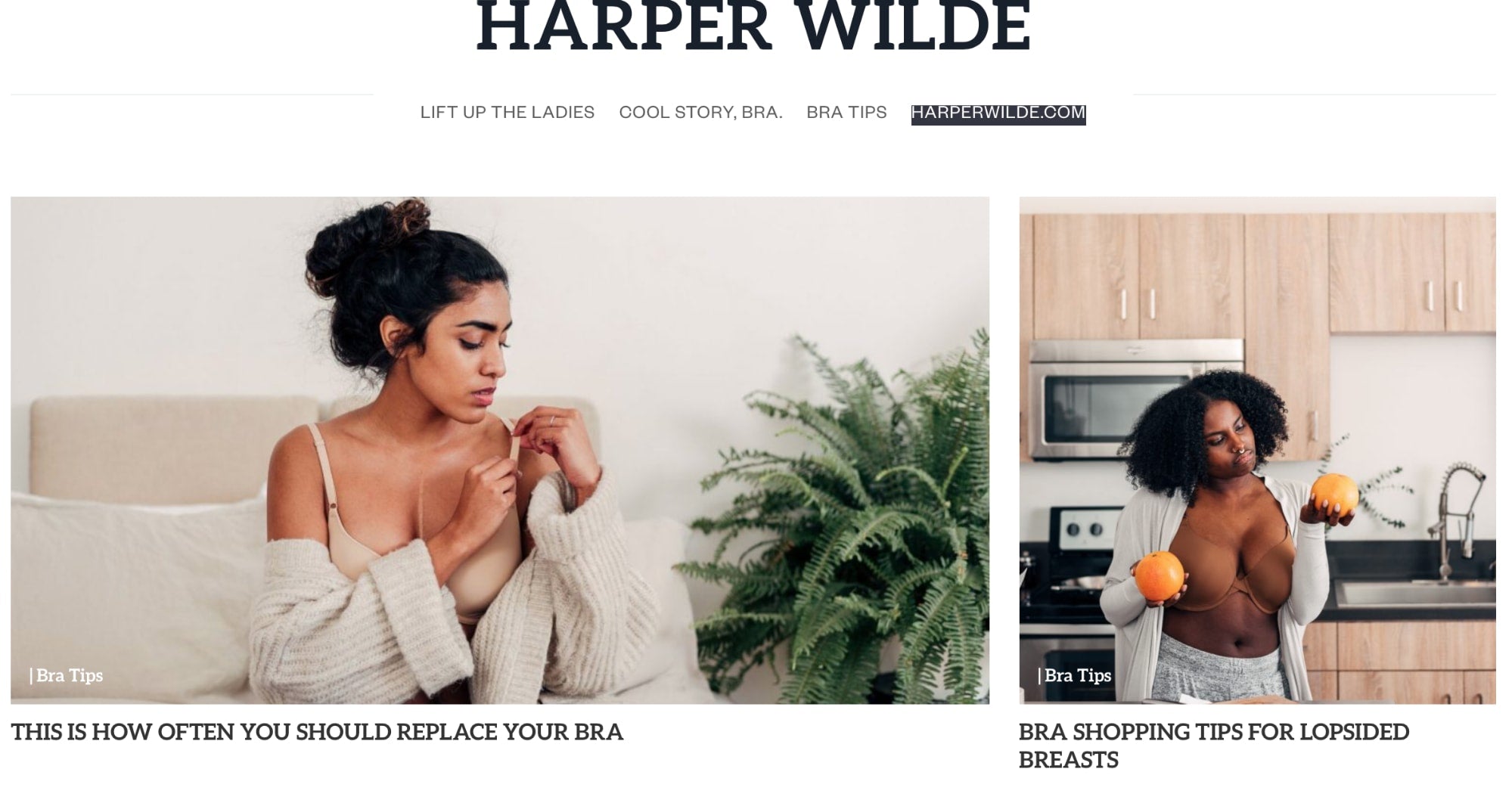
Harper Wilde’s blog is a wonderful example that many ecommerce businesses can follow. It uses straight-forward strategies that are adaptable, focusing on creating content that answers questions users are likely to have about bra shopping, sizing, and care.
Their blog also functions as an FAQ section for their site, which is a wonderful strategy to have. It keeps customers coming back, and it gives the company a place to drop product promotions (and use their product images), while still offering incredible value. Again, this is a great way to attract users through search engines, because they’re answering questions that users are actively asking.
While this information is available at almost every other bra retailer online, it’s the way Harper Wilde gives the information that makes all the difference. Their voice is distinct, and they focus on body positivity and acceptance. It’s relatable and it’s entertaining and, most of all, it’s fun.

One particularly great example of this is their “Send nudes? We’re sending thousands” post, which details how they created the charity campaign they’re currently running that donates a bra to an organization that helps women against sex trafficking.
All they ask for is women to post a picture of their response to someone asking them to send nude photos, and they’ll donate a bra in exchange. Everything about that screams “distinct branding,” ensuring that it grabs attention, and the integrated social campaigns and user-generated content act as a strong distribution method.
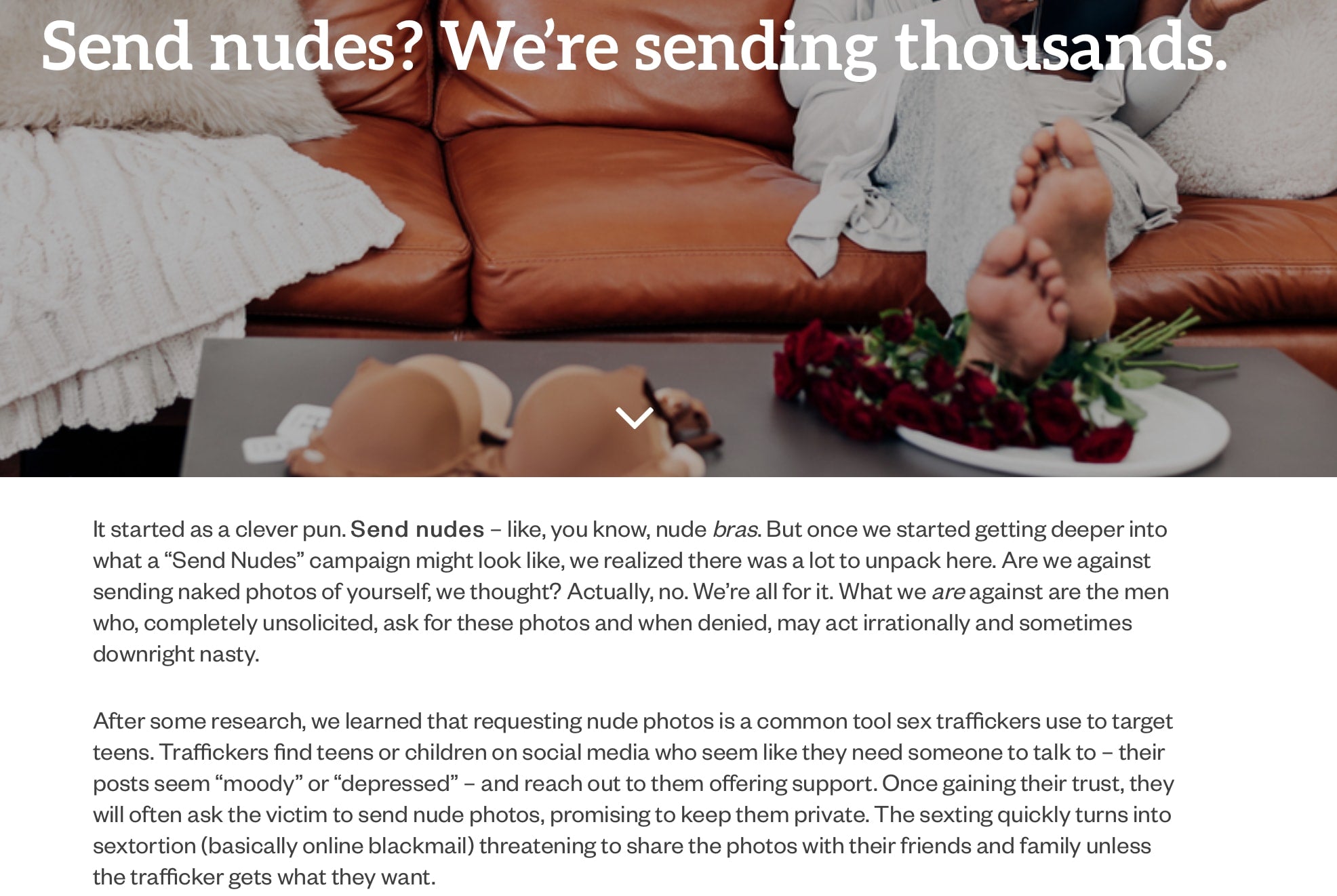
If you’re wondering how you can stand out, this blog is a good one to look at when you’re developing your voice.
Another point of their content marketing is that Harper Wilde also uses their content marketing to build up their email list and serve its subscribers. Their email opt-in is found underneath their blog, and they encourage users to sign up for “bra tips & puns.” This is consistent with their brand voice, and it also promises to share more of their great content through their newsletter.

Key takeaways:
- A strong branded, relatable voice that your audience will respond to will help you create memorable content.
- Your blog can be used to share contests, causes, and other company initiatives.
- Use your content to promote and increase opt-ins for your email list.
8. Sole Bicycles
Last, but definitely not least, we have Sole Bicycles: an ecommerce site that has all things bikes available for customers.
Their store immediately appears to have a very distinct style. So it only makes sense that their blog would be equally unique, as well.
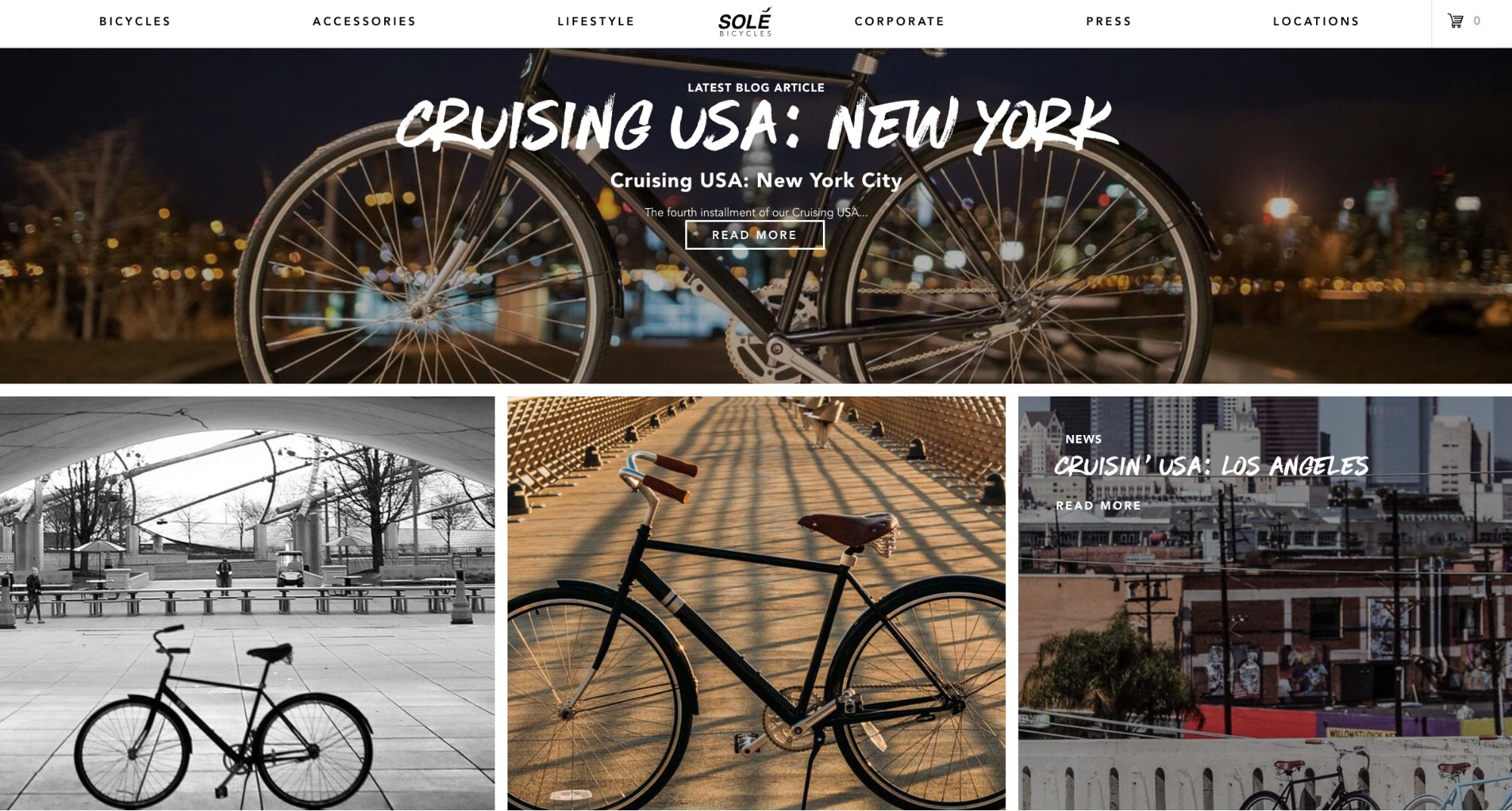
If you want your blog to be mostly visual, but include just enough context to have those pictures mean something, Sole Bicycles’ blog is a good one to look at.
Their blog is image-focused, though there’s a paragraph or two of text above all of the images. This gives them room to tell stories of exciting locations that you can see on your bike, and why pedalling through New York or Los Angeles is so much better than taking a cab.

While there are a lot of pictures of their bikes on the blog, it somehow doesn’t feel like it’s all about the bikes. That’s thanks to their exceptional storytelling abilities, which make it about the adventures you have on the bikes instead of the bikes themselves.
The posts are rich and dynamic (even though they’re short), trying to evoke a feeling rather than encourage reading. They have snippets of information about bringing bikes to Cuba, and their Chasing Aloha post that comes with a complete playlist ready to put you in the perfect mindset.
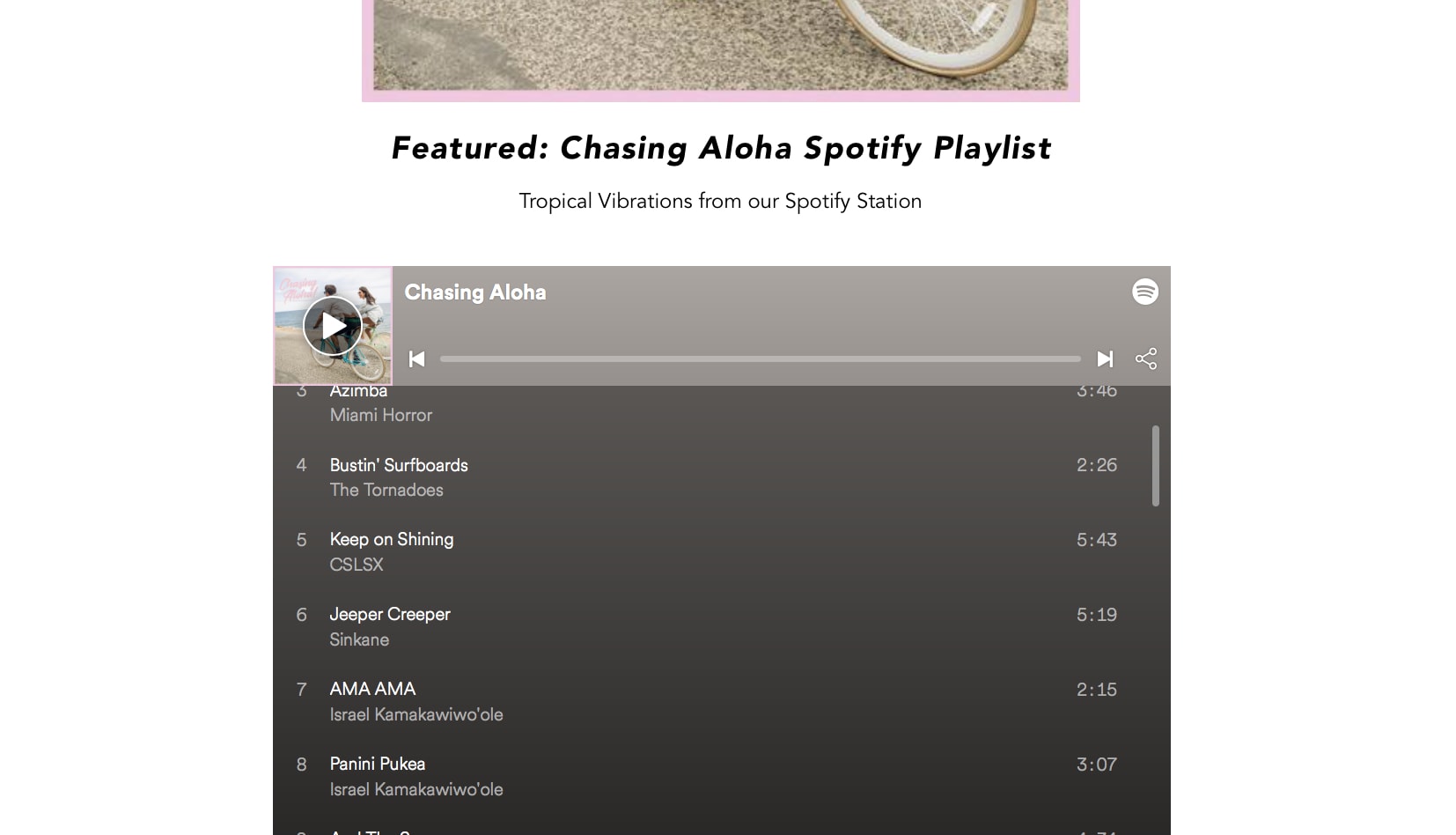
Wanderlust is a big thing, and even though most of their customers will only be riding these bikes around their own neighborhoods, it's tempting to buy one for the appeal of traveling on your own set of two wheels.
Key takeaways:
- If you’re going to have a blog focused on visuals, use text and storytelling to establish context and evoke emotions.
- Don’t limit yourself to one medium; add videos, Spotify playlists, and more to keep your content engaging. Remember: You can embed a variety of other content into a blog post, not just words.
- Go for the feeling you want your product to inspire, and focus on creating that feeling with your blog.
Learn more: How to Start a Blog
Your turn
Blogging has a lot of potential if you want to build your brand, increase email subscribers, establish relationships with potential customers, and drive sales. All that being said, it can only yield these incredible benefits when you implement it correctly and consistently.
The ecommerce blogs we examined are all from vastly different industries, targeting different audiences, each using different approaches that worked well for them. Likewise, as long as you put serving your audience first, you too can find your own approach.
